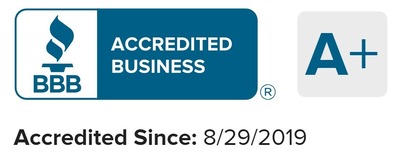Imagine a rental where the same tenant renews year after year, the rent is paid on time, the maintenance calls are few and reasonable, and you can finally stop budgeting for constant turnovers. This kind of stability is not luck. It’s a strategy. If you want to turn your rental into a low-stress, long-term income stream, this guide will show you exactly how to attract long term tenants, step by step.
In 2025, the cost of tenant turnover can cost you around $1,000-$5,000, factoring in lost rent, cleaning, and marketing. So securing a long-term tenant is necessary. With over 15 years of experience in rental property management across Oklahoma City, I have seen what works for securing long-term tenants. In this guide, I will provide landlord practices and strategies that you can apply to attract and retain long-term tenants.
How to attract long term tenants (step by step)
1. Pricing & Lease Structure: Be fair, transparent, and strategic
The average rent price in Oklahoma City in 2025 is $1,395, according to Zillow. If you set the price too high, vacancy days increase, and if the price is too low, it attracts job-hoppers or loss of income. So it’s necessary to set a fair rental price.
How to set rent:
- To set rents, examine local market data (like Zillow or OKC Home Realty Services rental listings) to compare rents by property class and by neighbourhood.
- Make appropriate adjustments based on upgrades and amenities you offer (e.g., an in-unit washer/dryer, parking, and security measures).
- Create a “sweet spot” – price the unit slightly under comparable new listings to attract faster interest, then offer lease incentives for longer terms.
Offer lease terms that encourage staying
- 12–24 month leases with renewal incentives. Offer a 12-month lease as the baseline, but give a small incentive for 18–24 month terms (e.g., a small monthly discount, or a guaranteed cap on rent increases).
- Rent transparency. Instead of surprise increases, always state clearly in the lease the maximum annual increase (e.g., “Rent may increase up to X% annually with 60 days’ notice”). Tenants prefer predictable rent increases.
Why this works: If a tenant believes they are having a fair and predictable deal, they are less likely to try and renew elsewhere. The surprise increase of a fee, or rent, will denote immediate action to locate another rental space.
2. Tenant Screening: Hire for longevity (not just ability to pay)
Tenant Screening Process should balance legal compliance, fairness, and the goal of long-term tenancy.
Key screening criteria that help predict long-term behavior:
- Stable income history. Look for steady employment or stable income sources (ideally >2.5–3x rent).
- Rental history/tenure: Check the amount of time spent at previous residence; the tenant is likely to spend a similar amount of time in the next residence.
- Credit & background checks — not just for rejection, but to understand risk and set guardrails (late-payment patterns, evictions).
Things to evaluate carefully:
- Multiple recent evictions
- Frequent short stays (many moves in a few years)
- Frequent job changes or unverified income
Best practices for screening tenants for long-term rentals:
- Use the same forms and consent for checks every time (Stay compliant with Fair Housing Law during tenant screening)
- Communicate expected timelines and be prompt — good applicants are often on the market and won’t wait long.
- Consider “look-alikes”: an applicant who fits your ideal profile but offers a reasonable compromise (e.g., strong rental references but lower credit can be offset by a higher deposit or guarantor).
Why this works: making a strong initial investment in the tenant screening process will help you reduce the chances of eviction and tenant turnover. It also helps you to get quality tenants and maximize housing stability over the long term.
3. Maintenance & responsiveness: Build trust with fast, fair service
Property inspections and timely maintenance demonstrate to tenants that you value their comfort and safety. Additionally, properties that are well-maintained are less likely to require costly repairs during emergencies.
- Prioritize property maintenance requests: Provide a quick response to tenant-initiated requests. If you indicate that you will respond to emergency issues that same day, or within 24-48 hours for non-emergencies, follow through.
- Property Inspection: Routine property inspections and seasonal maintenance reduce emergency calls. Change HVAC filters, check plumbing issues, and have annual checks done on significant appliances.
Why this works: Once tenants receive periodic inspections and timely maintenance, they feel they are in valued housing, and are more likely to renew.
4. Amenities & upgrades that promote tenant retention
Some small rental property upgrades help in promoting tenant retention.
Examples of High-impact and cost-effective upgrades include:
- In-unit laundry: Laundry providing convenience is often at or near the top of renters lists
- Energy-efficient appliances & smart thermostats: these appliances help to reduce bills and enhance comfort, all with a fair amount of return on investment.
Community-oriented features for multifamily or shared properties:
- Shared open green spaces, grill areas, or basic outdoor seating.
- Pet-friendly policies, including a small dog run or designated pet area.
Why this works: Good amenities increase satisfaction and create friction against moving (because tenants don’t want to lose conveniences).
5. Safety and security: Make tenants feel secure
For many tenants, safety is non-negotiable and correlates strongly with longer tenancies. Communicate clearly about safety measures, clearly outlined in listings and during the move-in process. Tenants appreciate knowing their landlord is concerned about safety.
Some Simple security actions to implement:
- Bright, motion-sensing lights on exterior premises.
- Secure locks and deadbolts, and electronic keypad entry for multifamily properties.
- If possible, install cameras in common areas (positioned to avoid privacy issues).
Why this works: The Perception of safety and security is a major driver of tenant decisions and renewals.
6. Build a relationship with the tenant
Tenants are more likely to remain in your property if they feel they belong and are part of the community.
Community building (multifamily or small group of rentals):
- Host occasional voluntary events (summer BBQ) or create a private social group (e.g., closed Facebook or group chat) for community announcements.
- Encourage tenants to flag minor issues before they grow; reward them for referrals.
Conflict resolution: If there is a dispute between neighbors, handle it on a professional level and do so quickly. Despite how ever you can, if your tenants feel like you are not taking their concerns seriously, it is less likely they will renew.
Why this works: People are loyal to landlords who treat them nicely. Engagement reduces the chance of them looking elsewhere.
Why long term Long-term tenancy matters?
Keeping tenants longer is one of the quickest ways to increase net operating income and avoid hassle. Here’s why:
- Reduce direct costs: The turnover costs really do add up when you have to clean, repaint, do repairs, and market the property, as well as perform background checks. Industry reports have shown averages of around $1,000 – $5,000 in costs for simply turning over a tenant. Reducing turnovers even a few times per year can save a lot of money.
- Reduced vacancy loss: If the unit is vacant, it lowers your rental income while your fixed and variable expenses are still occurring. Market reports show vacancy rates can vary by city and property class; in Oklahoma City, for example, apartment vacancy metrics hovered around the low double-digits in recent years, with nuances by class and neighborhood, so low vacancy rates are crucial for cash flow.
- Stronger community and reputation: Good treatment of long-term tenants leads to them referring other friends to your property or helping to maintain your property better. The longer you have good tenants, the more likely you are to develop a greater community and attract quality applicants.
- Less operating work: Fewer turnovers mean less repeated administrative work: fewer ad listings, showings, background checks, and move-in inspections. That frees up time or reduces property management fees.
Final Thoughts on how to reduce tenant turnover
In order to attract and retain long-term tenants in Oklahoma City, you will require a combination of fair pricing, prompt maintenance, strong security, positive tenant relationships, and prioritizing tenant satisfaction. Implementing all these methods provides a rental housing experience that typically reduces tenant turnover.
Whether you are struggling to manage multiple units, rent payments, or simply want reliable tenants, OKC Home Realty Services is here to assist you in regards to your rental property management.
Contact OKC Home Realty Services today, and turn your property into the kind of home tenants don’t want to leave.
FAQs: How to screen tenants effectively
What is considered a long term tenant?
In general, a long term tenant is a tenant that has signed a lease for a minimum of 12 months, typically extending their lease for multiple years. Generally, tenants who lease for 2-5 years or longer are considered long term tenants.
Do landlords prefer long term tenants?
Absolutely. Most landlords, especially those managing residential or single-family rentals, prefer long-term tenants because they provide financial stability and peace of mind. Long-term tenants usually view property as a home, not a temporary stop, which means they’re more likely to take care of it, pay rent on time, and build trust with the landlord.
How long do most tenants stay?
Most tenants stay, on average, between 2.5 to 3 years; however, this does depend on the region and the type of property.
Is it worth allowing pets?
Yes, allowing pets will increase your tenant pool and attract long-term renters. But it's necessary to ensure clear pet policies and deposits.

Author
Scott Nachatilo is an investor, property manager and owner of OKC Home Realty Services – one of the best property management companies in Oklahoma City. His mission is to help landlords and real estate investors to manage their property in Oklahoma.
 (
(









